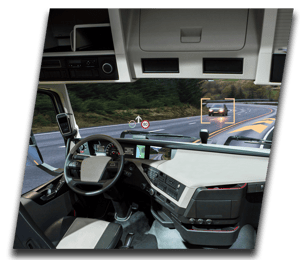With a little more than 18 months left in the decade, what are the main concerns for the trucking industry before we reach 2020? Three association leaders representing the Iowa Motor Truck Association, Toronto Transportation Club and the Women In Trucking Association informally shared their observations on the hot topics being discussed among their membership and what’s keeping them up at night.
Years of Labor Shortage
One of the biggest concerns amid leaders in the trucking industry is the driver shortage - as it has been for years. While members of associations across the continent are dealing with experienced drivers retiring out of the trade, they are also finding difficulty in recruiting new, qualified drivers to fill those spots. There’s a push--industrywide--to identify, train and hire individuals in the 18-25 age range to become drivers; it’s still an onerous task.
 Ellen Voie, President and CEO of the Wisconsin-based Women In Trucking Association (WIT), pointed out that younger age groups are not looking at blue collar careers the same as they once did.
Ellen Voie, President and CEO of the Wisconsin-based Women In Trucking Association (WIT), pointed out that younger age groups are not looking at blue collar careers the same as they once did.
“I think it’s even more pressing now. With the fact that they’re increasing driver wages and still looking for talent capacity, it’s crazy. What I keep hearing from companies is that they can’t fill their trucks,” Voie said. “Then the incoming generations don’t look at blue collar careers. Everybody wants to send their kids to college and we’re not sending them to trade schools.”
The Workforce: Casting a Wider Net
But, it’s not only younger drivers the industry is looking to hire.
“For as long as I’ve been with the association there have been two issues we’ve always talked about  regularly and one is our ability to attract good drivers, and, in general, our ability to attract employees into theindustry - drivers, mechanics, even office help,” said Brenda Neville, President and CEO of the Iowa Motor Truck Association (IMTA). “I’ve heard some of my carrier members say it’s even difficult for them to find accountants, safety directors, you name it.”
regularly and one is our ability to attract good drivers, and, in general, our ability to attract employees into theindustry - drivers, mechanics, even office help,” said Brenda Neville, President and CEO of the Iowa Motor Truck Association (IMTA). “I’ve heard some of my carrier members say it’s even difficult for them to find accountants, safety directors, you name it.”
People having an image of the trucking industry that’s just “smoke stacks and diesel engines” is an issue, Voie said. She believes younger workers aren’t noticing that technology is becoming much more prevalent for the industry and advanced ideas like autonomous vehicles are also becoming more of a reality.
And, while the percentage of women in the industry has risen since 2016, more can be done to open up a suppressed labor pool. To that end, part of WIT’s mission is to encourage employment and minimize obstacles for women in the trucking industry; mixed gender training policies have bubbled up as a big concern. In the wake of the March 2018 introduction of the house bill, Developing Responsible Individuals for a Vibrant Economy Act (DRIVE-Safe Act), which amends federal regulations preventing truck drivers under the age of 21 from crossing state lines, Voie further advocates and is reaching out to congressional representation to request legislation permitting carriers the option to use same gender training policies, now prohibited. “In my opinion, if we allow a same gender training policy, we’ll get more women trainers,” she stated.
Autonomous Trucks with no Driver Assist
WIT’s Voie actually took a ride in an autonomous Uber truck, but there was still a driver behind the wheel in case things went south. She thinks the industry is a ways away from trucks being completely on their own instead of being monitored with driver assist. And, even further off is having an autonomous truck being able to maneuver through snow.

IMTA’s Neville agreed. Even with all the new developments in technology for the trucking industry, she, too, believes a truck with no driver assist isn’t in the offing.
“I just think with the general acceptance by the motoring public…there’s still a long way to go,” Neville said. “And also with the regulatory environment. There are just so many things that that need to be in place before you're going to see a level five--and a level five is totally no driver. I think that's so far off — at least 10 or 15 years, if not more.”
Keeping Up With Industry Regulations and Standards
According to Neville, Hours of Service regulations need reform and are as much of a priority as workforce development if the industry wants to attract 18-21 year old employees. She’s pleased to see the introduction of the DRIVE-Safe Act and hopes it will direct the US Secretary of Transportation Elaine Chao to issue regulations that will permit the 18-21 age group to be able to get behind the wheel and, as CDL holders, finally be permitted to cross state lines.
But, is the industry focusing on workforce flexibility?
 “Corporations are definitely trying to do that - it’s sometimes easier said than done,” said Toronto Transportation Club (TTC) 1st Vice President James Mitton, adding, “sometimes you have no choice but to send drivers farther afield.”
“Corporations are definitely trying to do that - it’s sometimes easier said than done,” said Toronto Transportation Club (TTC) 1st Vice President James Mitton, adding, “sometimes you have no choice but to send drivers farther afield.”
Mitton, who is Vice President of National Accounts for APPS Transport Group, headquartered in Mississauga, Ontario, said Canadian initiatives include driver swap as one way corporations are addressing flexibility concerns. Instead of traveling from one city to another and staying overnight, drivers meet halfway and change trucks, so both drivers can go back home and sleep in their own beds.
With that in mind, IMTA’s Neville mentioned the trucking industry has always been very progressive and nimble - ready for change. She has seen more and more trucking executives look at operating models that will support better work flexibility to attract young adults, women, minorities and fathers who want to stay home more often.
ELDs and Safety
TTC’s Mitton said that with the laws mandated by electronic logging devices (ELDs), technology advancements have been helpful. Specifically to see where drivers have gone and how long they’ve been driving - and to curtail the ongoing issue of driver fatigue.
“It’s paramount - safety is the number one thing,” Mitton said. You obviously don’t want people driving when their tired or overextended for their hours for the week. I think it’s a good thing for the industry. Having the electronics and IT systems will make it easier and easier to track drivers’ hours and times and that’s the whole purpose of the elog is to do that versus pen and paper.”
Neville said Hours of Service regulations are a safety concern that come up regularly within the industry.
“If it isn’t a priority, it needs to be. I think ELDs have impacted our industry but one of the most significant things I think the electronic logging devices will bring to the forefront is the tremendous need we have to make some changes in the Hours of Service regulations,” she added.
Blockchain: Becoming More Relevant
Voie said the aspect of keeping information more secure, especially in supply chain, shows blockchain technology can have a positive impact, as well as keeping everyone on the same page due to the transparency of the digital ledger.
Neville said blockchain was brought to her attention by her carriers, showing her that it has the potential to make a significant change in the industry.
“I think the industry has to embrace and think about every possible avenue. Technology is going to continue to play a really important role in our industry and to me the blockchain potential is another part of that technology equation that I don't think we can ignore,” said Neville.
Freight Capacity: Shift to More Online Buying
“Most goods are being moved at less-than-truckload capacity. A lot of those goods will now, from a consumer standpoint and from a retail standpoint, go from the manufacturer right to the person's house. You're going to see a lot more small pack with [companies] like FedEx, UPS — again the IT behind all of that is massive,” TTC’s Mitton said.
 Voie mentioned technology has made products smaller and smaller, so seeing those LTLs is not surprising. One example she gave was the change in the size of the television.
Voie mentioned technology has made products smaller and smaller, so seeing those LTLs is not surprising. One example she gave was the change in the size of the television.
“[Products are] taking less room in a truck — the old console TVs used to take up a lot of room and now they’ve got flat screens. If you want to buy a couple TVs, or you want to buy one TV or let's say you’re a store and you want five TVs — it's not a truckload. That seems to be why UPS and FedEx are doing much more business because people aren't bringing a truckload of TVs.”
On behalf of their membership, what all three association leaders had in common when talking about the future of the trucking industry was that technology is definitely at the forefront.
“The best way to put it is the future is unknown, but technology will play a part in our lives in the trucking industry or it will play a greater and greater role for whatever — whether it's the sensor on the back of the truck that tells you the temperature, when the doors open and close, whether it's logging people's hours, telling people where their goods are — that's just going to continue to be a bigger and bigger part of life for people in the transportation industry,” said Mitton.



